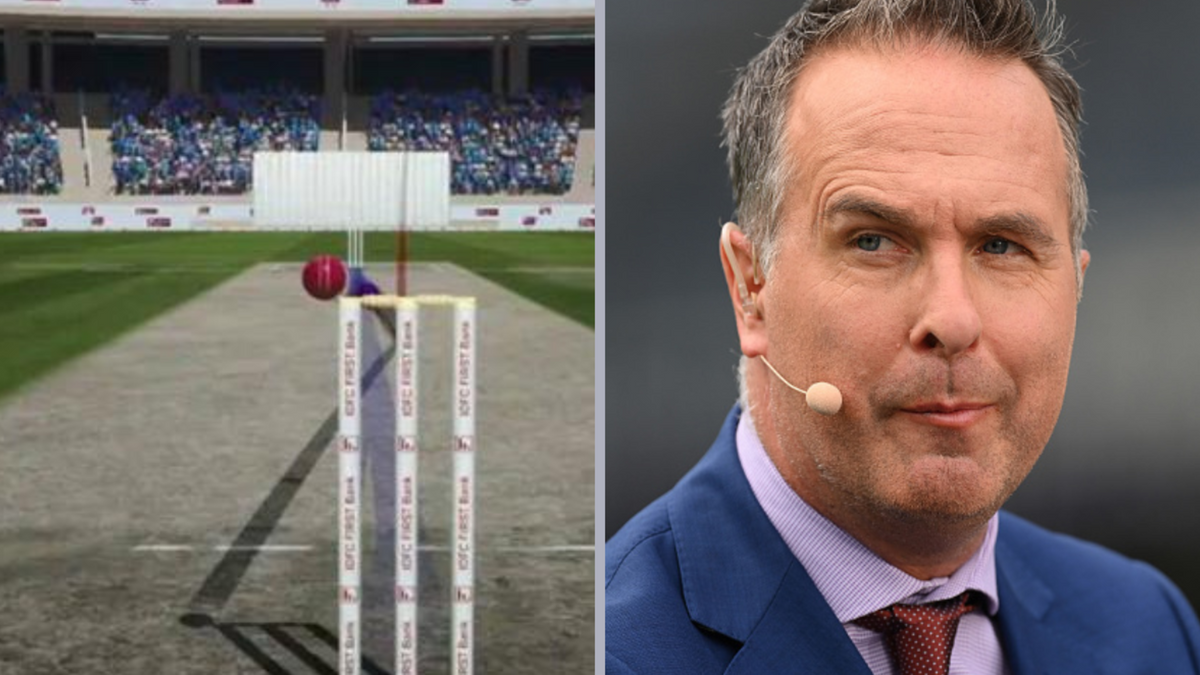
Paul Hawkins, the founder of Hawk-Eye, has criticised Michael Vaughan for “factually incorrect” comments over DRS after several contentious calls during the ongoing India-England series.
Subscribe to the Wisden Cricket YouTube channel for post-match analysis, player interviews, and much more.
Vaughan’s comments came after Joe Root’s dismissal in Ranchi aggravated the DRS discussion, when the star batter was adjudged lbw after the ball was shown to be pitching just in line on review. On-field, Kumar Dharmasena was unconvinced on India’s appeals for the wicket, seemingly suggesting the ball had pitched outside leg stump. But ball-tracking indicated otherwise, and Dharmasena decision was overturned. This led to increased commentary over the transparency of the DRS process, which began after Zak Crawley fell to marginal calls twice.
While Ben Stokes called for the abolishment of the umpire’s call, Vaughan called for more transparency and asked for cameras to be placed on the DRS operators in their trucks. He said: “I’m not saying anyone is cheating. I’m trying to give an answer for when a decision is made and we all disagree with it. If the person on Hawk-Eye is filmed it puts the noise to bed.
“The most important operators of decisions now are in the trucks. We need to have a camera in the truck to give an understanding of how it all comes to that decision. All I want is full transparency.”
READ: Hawk-Eye inventor: ‘If you start from scratch, is there a reason for umpire’s call? Probably not’
When asked about Vaughan’s suggestions, Hawkins gave a detailed breakdown of how the DRS operators work and how many people are involved in showing the graphics after a review is taken. He also mentioned that cameras are indeed placed inside the vans for quality control.
Speaking on The Analyst podcast, he said: “So, there’s three people typically on the Hawk-Eye tracking side of the system and then another person who does the UltraEdge in typical production. So, one person’s doing the virtual reality – the output side of things – and there’s two independent people that do the tracking, so there’s no single point of failure. The cameras come into the two independent tracking systems, there’s two sets of readers, two separate operators. And so every single ball – you’ve got essentially two watches and you’re checking that they’re always the same and you’ve got that quality control between the two systems.”
Hawkins also elaborated on the routine for the operators during every match day: “So for every day, the guys will go out and measure the width of the stumps. And so that gets entered into the system. So you’re working off of the actual width of those stumps, and, and places like Lord’s, where there’s a slope, you’re gonna see whether the stumps are vertical, whether they’re perpendicular to the ground, and take into account those kind of issues. So you calibrate the system for the environment that it’s there.
“A good process that’s evolved in terms of quality control is that there is a van camera, which is more an internal process, making sure people aren’t on their phones. But the best thing in terms of quality control is an automatic screengrab of the tracking system is taken and that automatically goes to the ICC. So whilst it will never go to broadcast because there’s lots of intellectual property within those screengrabs for the internal quality control for the people that need to make sure that the technology providers are providing accurate answers, that’s all done.”
After clarifying the presence of cameras in the DRS vans, Hawkins commented on Vaughan’s suggestion, stating that he has a responsibility in his role as a journalist to be factually correct.
“The commentary, I think, is a little bit uneducated. It is unfortunate from Vaughan, because, obviously fantastic player, really enjoyed watching him play, and a great commentator, very entertaining. But I think it’s a responsibility to the game, in terms of journalism. Perhaps a little bit more preparation in terms of his role as a journalist may help him explain what’s happening to the huge fan base of cricket so that what he writes is factually correct. In the same way as Hawk-Eye has an obligation to be factually correct, perhaps journalists do too.”








